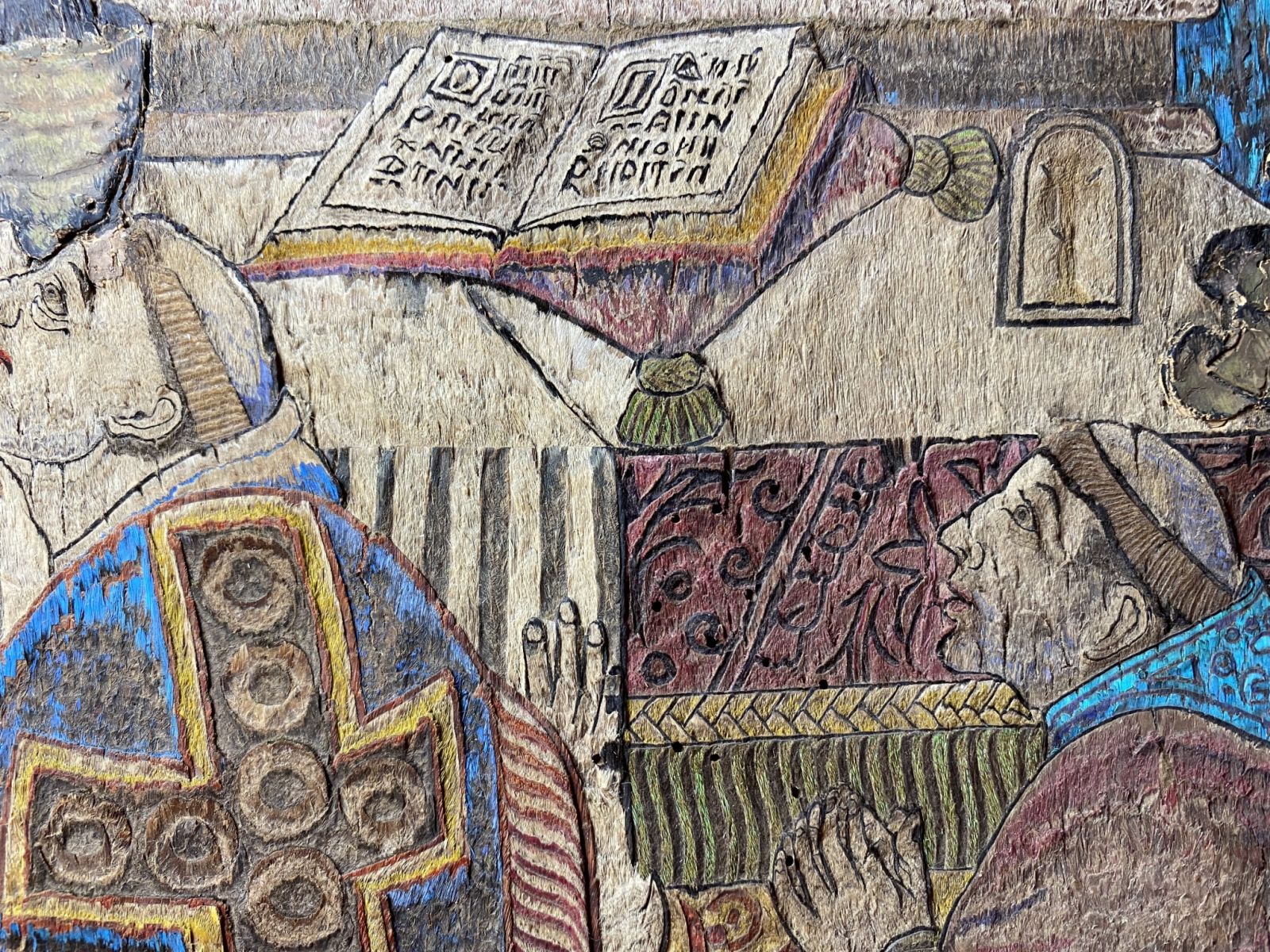Lecture
Aaron M. Hyman
Letterform Literacy in the Spanish World

Unknown Mexican artists, The Mass of St. Gregory, 1539, detail. Feathers, metal, and paper on wood with touches of paint. Musée des Jacobins, Auch, France.
Spain’s transoceanic empire ran on paperwork. There were mountains of bureaucratic records, to be sure; musical scores, missives, missals, and all manner of other handwritten and printed materials were equally important to the functioning of a newly expanded church and colonial administration. However, this lettered sensibility came into conflict with the traditions of analphabetic inscription—pictograms, oral tradition, and numerical record keeping—that were common in the pre-conquest Americas. Historians have thus often looked at the process of “literacy formation” as one of semiosis: the ways that both European and American semiotic systems were transformed in forging cross-cultural communication. This talk takes a different tack by looking at the inculcation of literacy as a formal process by which Indigenous subjects of sixteenth-century New Spain came not just to read letters and words but to understand that letterforms could themselves have valences and be mobilized for meaning well beyond their semantic content. Artists were among these subjects. By attending to the visual rather than purely semantic potential of words, one can locate the traces of a Euro-American negotiation both in the most famous works of art produced in New Spain (multi-color featherwork) and those almost entirely overlooked (relief carving in volcanic stone). But isolating this process has far greater ramifications: these objects serve as a prompt to begin reanimating a period visuality around the formal features of script that have largely eluded early modern art historical evaluation on both sides of the Atlantic.
Aaron M. Hyman is assistant professor in the Department of the History of Art at Johns Hopkins University and currently a fellow in residence at the Universität Bern as part of the ERC-funded “Global Horizons in Pre-modern Art.” He is author of Rubens in Repeat: The Logic of the Copy in Colonial Latin America (Getty Research Institute, 2021), which was awarded Best Book in Colonial Latin American Studies published between 2019-22 by the Latin American Studies Association, honorable mention for the Renaissance Society of America’s Phyllis Goodhart Gordon Book Prize, and honorable mention for Association for Latin American Art-Arvey Foundation Book Award. This talk emerges from a new book project, Formalities: The Visual Potential of Script in Art of the Early Modern Spanish World, which has been supported by fellowships from the American Council of Learned Societies, the Newberry Library in Chicago, and the Thoma Foundation.
The lecture will be followed by a book discussion on Friday May 5 at 11.00am. To reserve a place and receive the relevant reading material in advance, please contact Sinem Casale at sinem.casale@khi.fi.it.
04 May 2023, 3:00pm
This will be a hybrid event.
Venue
Palazzo Grifoni Budini Gattai
Via dei Servi 51
50122 Firenze, Italia
To participate online please register in advance via Zoom https://eu01web.zoom.us/meeting/register/u5AtdOiorjMoGdzUdpSN4KiyZl6Ko_d6pWUM
After registering, you will receive a confirmation email containing information about joining the meeting.
Notice
This event will be documented photographically and/or recorded on video. Please let us know if you do not agree with the Kunsthistorisches Institut in Florenz using images in which you might be recognizable for event documentation and public relation purposes (e.g. social media).


